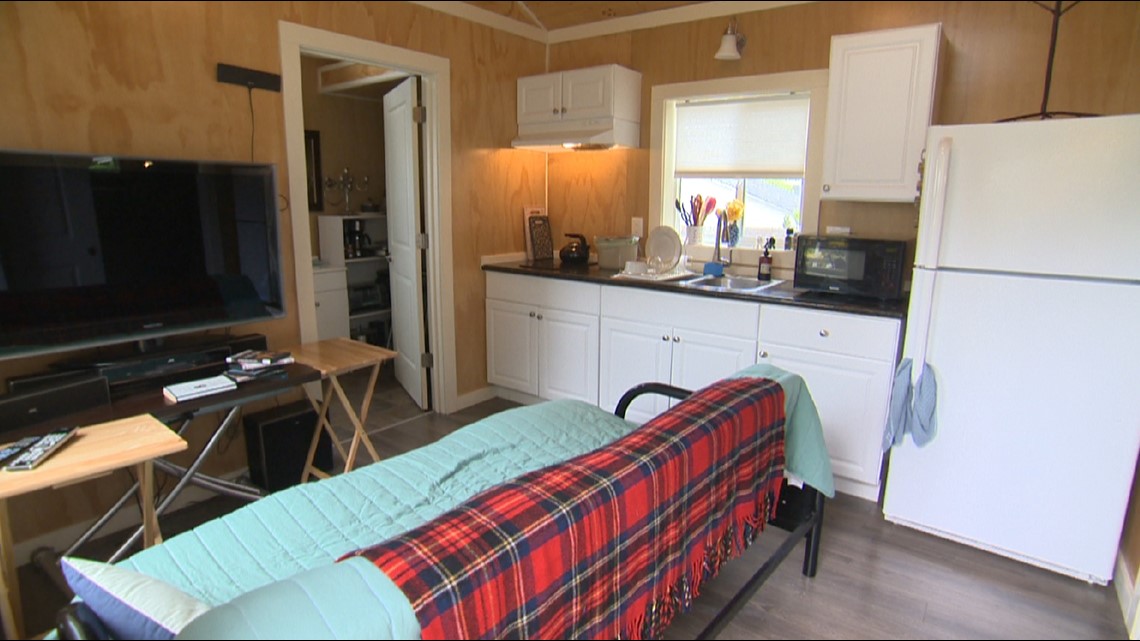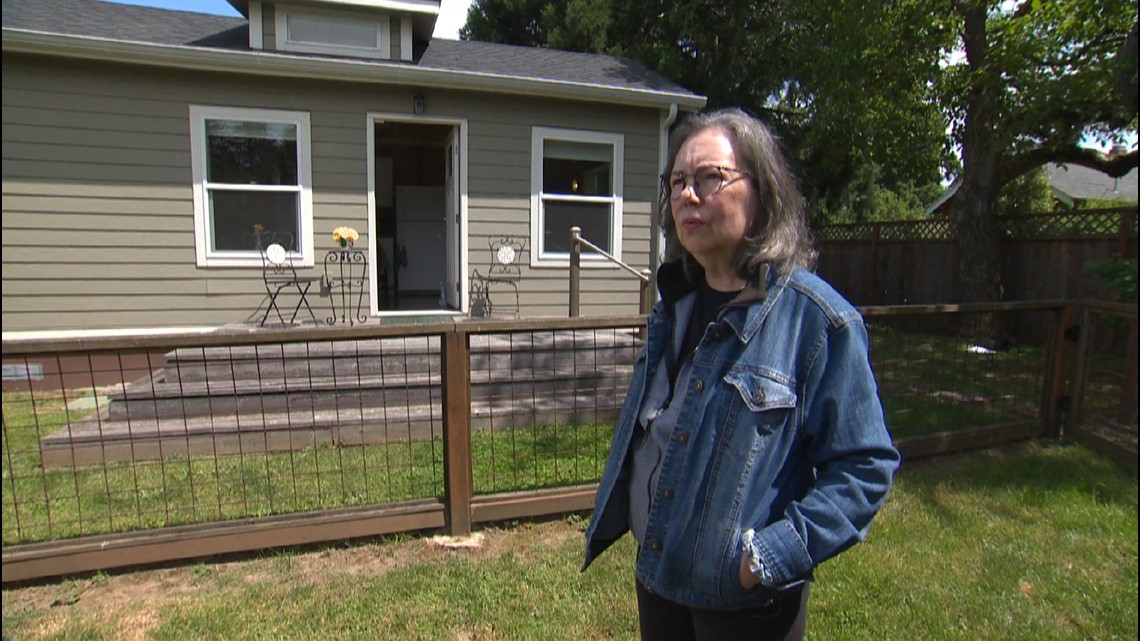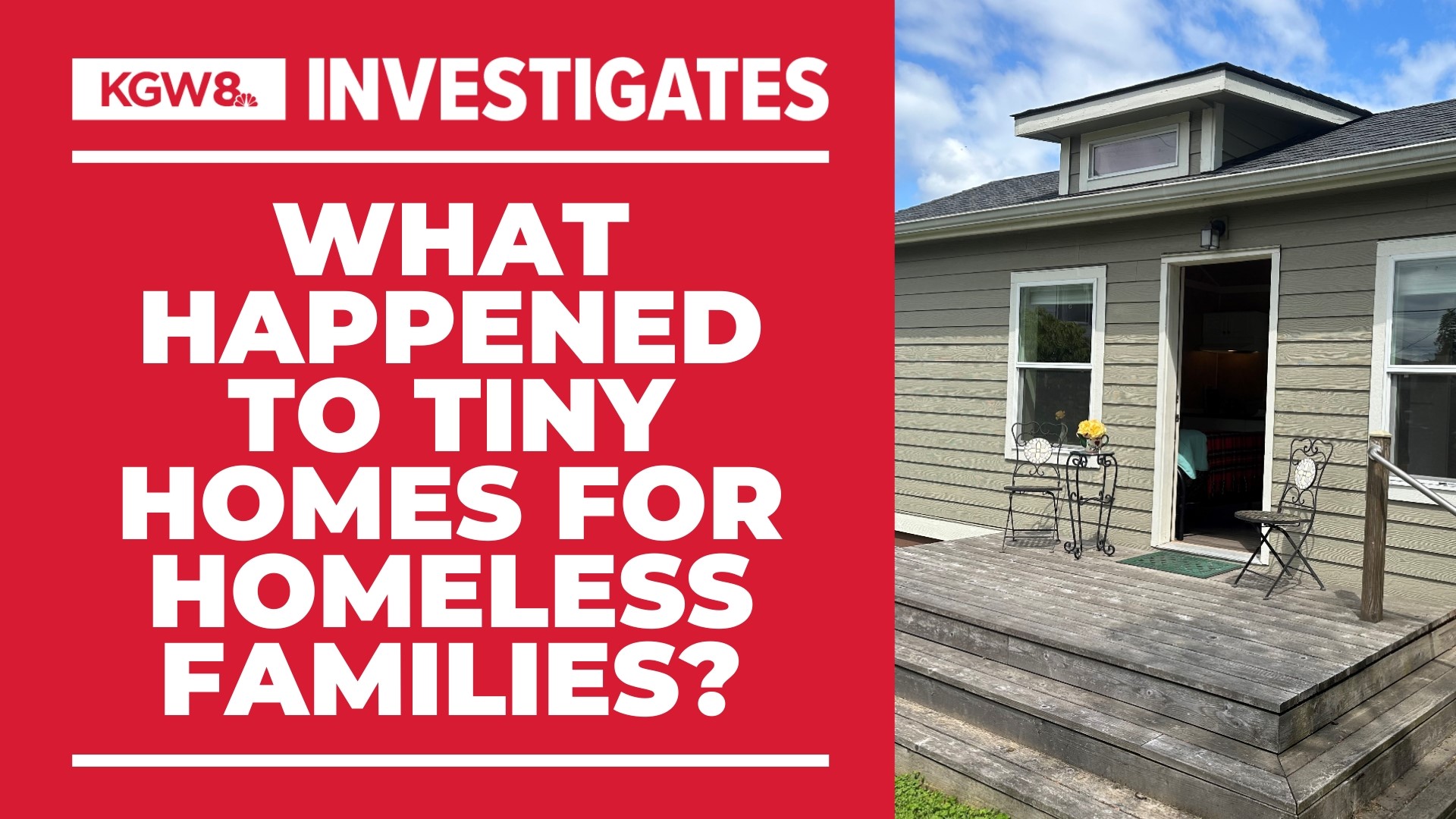PORTLAND, Ore. — It was quite an offer. In 2017, Multnomah County came out with a plan to build tiny homes in people’s backyards for free if they agreed to let a homeless family live there for the next five years.
The project, called A Place for You, aimed to build as many as 300 ADUs, or "accessory dwelling units," in backyards across the Portland-area.
So, what ever happened to the program?
“I think it was all set-up to be successful and then the ball got dropped,” said homeowner Martha Chambers. “I’d have to say it was a failure.”
In April of 2018, the county placed one of its first tiny homes in Chambers’ North Portland backyard. The 288 square-foot cottage came fully furnished. It has a tidy kitchen with living space, small bedroom and private bathroom.
“They did a really nice job,” said Chambers while standing inside her backyard unit.
Nearly 1,000 homeowners applied for the program. Four were selected.
“I thought, ‘Wow! This is a great idea and I get to keep the house at the end,'” Chambers explained.


The total budget for the project was initially estimated at $550,000 for construction, planning and installation, according to a 2018 report by Multnomah County. The four tiny homes cost between $80,000 and $133,000 each — depending on which company built them.
Program funding was shared between Multnomah County, the Joint Office of Homeless Services and the Meyer Memorial Trust.
By late summer of 2018 the first units were complete, and four homeless families had a place to call their own.
“The woman who was living here and her niece were living in her truck prior,” Chambers explained.
Initially, things went well — but then, relationships soured. There were challenging circumstances causing stress among neighbors, and then the COVID-19 pandemic hit.
Within two years, the once-homeless family had ditched the program and moved out. Chambers’ backyard unit sat vacant for months, then years.
Chambers explained there was little support or follow-through from program organizers.
“I felt abandoned,” said Chambers.


Other participants shared similar frustrations. Three of the four homeowners had their families leave, according to those involved with the program. It is not clear whether those families found stable housing or returned to homelessness.
Just one homeowner had a family stay in his backyard for the past five years.
“The pilot project has the potential to succeed,” said John LaMar.
The Northeast Portland homeowner has hosted a father and son in his county-built ADU since 2018. The family plans to move out this summer at the conclusion of the program.
LaMar said the program needed greater accountability and oversight. Instead, it was handed off from one agency to the next — with no one taking ownership.
“I wish our county had the foresight to plan and commitment,” said LaMar.
Similar experiments to house homeless people in backyards have been tried elsewhere, such as Los Angeles and Seattle. The BLOCK Project in Seattle has built 15 energy efficient tiny homes since 2017.
Unlike Portland, homeowners in Seattle have no financial incentive to put a unit in their backyard and there’s strong support structure for both the homeowner and their backyard neighbor.
“We really want to foster community by making sure people know that we care about them. We see them,” explained Phoebe Anderson-Kline of the nonprofit Facing Homelessness, which helps coordinate BLOCK Project. “We want to know what’s working and what’s not.”
BLOCK Project says 95% of the people who participated in the program have remained in the tiny homes or went on to find other stable, permanent housing.
“We’re more than a radical concept. We’re a proven solution with the BLOCK project,” said Bernard Troyer, BLOCK Project construction director.
The idea for the Multnomah County project came from the Multnomah Idea Lab, a county policy center. At the time, local leaders enthusiastically embraced the idea.
“This is an innovative idea to provide non-shelter alternatives to homelessness," said Portland Mayor Ted Wheeler in a statement.
In 2017, Mary Li, director of the Multnomah Idea Lab, told reporters that if all went well, she hoped to build as many as 300 of the tiny homes in the next year. Instead, the program turned out just four units.
“Unfortunately, I don’t have any information to share about the work,” said Li in a recent email to KGW. “The Project was transferred to the Joint Office on Homeless Services several years ago.”
It has since been handed over to the nonprofit JOIN, according to a county spokesperson.
Multnomah County did not respond to a list of questions regarding the program.
“There was just no follow through,” said Chambers, who recently bought the tiny house after coming to an agreed-up price with JOIN, which inherited the program.
Under the original terms of the project, homeowners said they were told they could keep the tiny homes if they let a homeless family live there for five years. In 2018, the county appeared to change it’s offer by explaining that after five years, the homeowner has the option to buy the ADU at fair market price.
The director of JOIN, which inherited the program, did not respond to KGW’s email requesting comment and clarification.
Multnomah County’s project, A Place for You, attracted national media attention in 2017. At the time, the county celebrated being the first jurisdiction in the country to successfully test this model — placing homeless families in backyards.
Five years later, the pilot program has quietly dwindled — seemingly due to a lack of coordination by those who promised big, new ideas to help homeless people.
“I think it could have been much more successful if there was better follow-through,” said Chambers.

